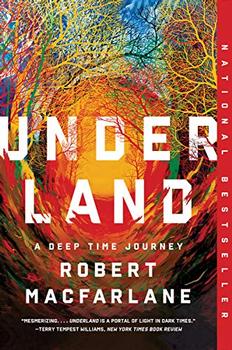Summary | Excerpt | Reviews | Beyond the book | Read-Alikes | Genres & Themes | Author Bio

A User's Guide to the Past, Present, and Future of Urban Life
by P.D. SmithI have been enjoying the fairly recent spurt of books that explore the history and meaning of homes and houses, such as Lucy Worsley's If Walls Could Talk and Bill Bryson's At Home, and I have always been a faithful reader of Witold Rybczynski's explorations of architecture and cities. Writers like these concentrate their books on a particular concept or structure, and dedicate themselves to seeing how long they can spin this initial thread of an idea.
P.D. Smith's approach is different: City is not the kind of book that allows the reader to see a subject up close, but rather, to see how far a subject is capable of reaching into the far corners of the world and the depths of time. The pleasure in reading City comes from moving quickly from subject to subject, skipping one moment from a paragraph on urban cemeteries to another on graffiti, and linking a chapter on hotels to another one on coffee shops.
City's small, organized chapters make it easy to pick up and read a portion or a paragraph in isolation - each chapter is broken into focused sections that allow Smith to cover a great deal of ground: walled cities, holy cities, port cities, slum cities, resort cities, Chinatowns, ghettos, and much more. The inherent diversity should appeal to travelers, wanderers, and those who delight in observing the similarities and distinctions of the world around them. Readers are likely to uncover something new and foreign in the pages, such as the Walled City of Kowloon, China; Andrew Lawrence's skyscraper index; or the skywalks of Mumbai. This is a book to be picked up and put down over and over; it's not for the reader who wants to get lost in a narrative, but instead wants to enjoy images and information in tidy, small doses.
Though the chapters are slim, this is certainly not a flimsy book. City is a thick, heavy hardback, not quite as big as a coffee table publication, but larger than the average novel. It's stuffed full of beautiful photographs, both modern and old, and uses calming pastel colors - lavender, coral, mint, terra cotta. The liberal use of photography and color gives an expensive impression, and one that I often associate with overpriced books that please the eye but not so much the mind. Fortunately, City delivers on both parts. It occupies an interesting place that is somewhere between an oversized picture book and a study of urbanization.
If you have ever loved a city and felt that you belong downtown somewhere, whether in the hot, fragrant roads of Bangkok or the buzzing streets of New York, there's something in PD Smith's City for you. Smith identifies what is unique and beautiful about many cities, providing both reasons for hometown pride as well as curiosity about foreign, lesser known places. This exploration builds up to a discussion about present and future urban life, but this aspect is tiny in comparison to the rest of the book's heft. City is a historical project, and the history that it uncovers is an exotic world that is both ancient and modern. Subsequently, readers see how cities have given birth to practices that are fundamental to humanity, such as writing, economics, and trade.
Ultimately, Smith stresses the idea that the urban center is the cradle of civilization by drawing on details from history, literature, art, theology, and philosophy. This makes for a fun, optimistic read that is also highly informative and one that I'll return to as both a reference and for the pleasure of its photographs and curious anecdotes.
![]() This review
first ran in the June 28, 2012
issue of BookBrowse Recommends.
This review
first ran in the June 28, 2012
issue of BookBrowse Recommends.

If you liked City, try these:

by Robert Macfarlane
Published 2020
From the best-selling, award-winning author of Landmarks and The Old Ways, a haunting voyage into the planet's past and future.

by Mark Kurlansky
Published 2018
A city of tropical heat, sweat, ramshackle beauty, and its very own cadence--a city that always surprises--Havana is brought to pulsing life by New York Times bestselling author Mark Kurlansky.
Your guide toexceptional books
BookBrowse seeks out and recommends the best in contemporary fiction and nonfiction—books that not only engage and entertain but also deepen our understanding of ourselves and the world around us.